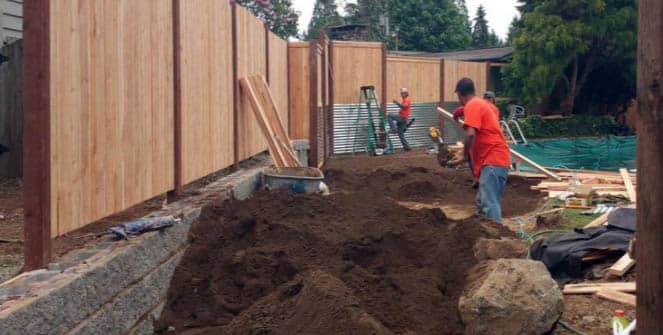The rims of a house’s basis are a superior real estate for growing plants and herbs, though frequently include inadequate dirt situations. Dirt compression from the initial formation and corrosion by rain running down the roof are the most obvious reasons for causing the hassle.
However, it is likely to expand the soil to enhance the position for foundation sowing. While, that too, with great attention to make certain the uprightness of the home and its practical systems are never endangered.
As a result, it is necessary to start filling in dirt around the foundation of a home for a better outcome. You can know in details about dirt to use around foundation the home, if you are interested or if you need.

What is Dirt of a Home Foundation?
Every residence has a basis, and each basis should be built efficaciously, competently and correctly to last longer. Since the substances that build up the building and the technique of constructing it are crucial.
In contrast, one thing which is frequently not noted is the dirt supporting them since even the basis of a building needs to be solid. Each sort of dirt has distinct attributes that have an effect on foundations in another way.
Usually, dirt might be greatly solid, the more rocky and dense earth, the more it incorporates in making a solid foundation for a home.
Best Ways for Filling in Dirt Around Foundation
The best 5 ways for filling in dirt around any foundation are:
1. Strip System
The usual routine in strip system is to put a lesser sturdy concrete as feasible into channels after which to construct from that with cinder block until floor level. While the walls transfer to stone or even brick or the selected exterior cladding ought to be. Hence, that is called a strip system.
In contrast, for a one-story constructing strip system will conventionally be 450 mm broad and at the very least about 200 mm depth. Also, for double stories about 600 mm broad and 200 mm in depth. Also, it is divided into two sub-systems that are deep strip and wide strip.
2. Trenchill System
An extensively used way is the trenchill system, where the channels are full of blended concrete to a below floor level. Metal reinforcement can be included in regions near to plants and trees.
While trenchill technique saves on hard work, it will include the general value of the foundations. Simply above floor level, the foundations are covered with a humid-proof way and afterward, the floor is hardened.
3. Raft System
Just like its name, a raft is created to ‘flow’ at the floor below. The composition is created with an extra-dense ground slab, bolstered by using clumps on metal reinforcing.
Furthermore, rafts possess the benefit of giving the foundation of a floor solution and not simply wall channeling. However, they are computed to be instead complicated to assemble.
A concrete raft is utilized wherein the dirt needs such a huge posture space that broad strip systems are unfolding too far. Consequently, making it greater within the budget to flow one massive bolstered concrete slab.
4. Piled System
A few house-builders utilize the piled system on each area online due to the fact the prices are foreseeable. Piles are pushed into the floor and then with charged concrete, so the complete foundation gets crowned with a floor beam to construct off.
Types of Piled System
Piled system has further two types that are as below described. Hope you can know few more details about the system.
i) Short-Bore Piles and Beam
These are commonly three-meter lengthy and may be strengthened with metal. Every pile is afterward fixed at the top through a formed straight beam of bolstered concrete. Hence, a suspended bolstered concrete floor may later be constructed using formed elements or forged in situ.
ii) Friction Pile
The comparable concept like short bore piles and beam utilized in conditions wherein there’s no fit bearing layer at a suitable intensity. Friction piles depend on skin-resistant towards the dirt.
5. Pad System
They are utilized when remoted masses require to be assisted, for example, to aid the support of metal or submit and beam structure home. The mass is focused on a tiny place instead.
Building solid foundations required to be on solid and strong dirt. However, dirt range in sturdiness. Due to the reason that some dirt is capable of assisting a skyscraper to stand tall, while other dirt is not even capable of supporting the burden of a human.
Conclusion
Hence, if the dirt under a building especially a home is not strong, the base of the building may even break, sink, or even worse–the building may fall. Therefore, it is necessary to use a sturdy method for filling in dirt around foundation.

